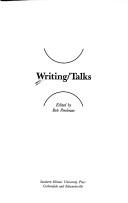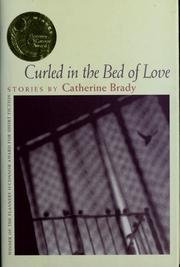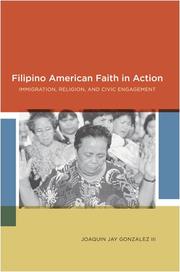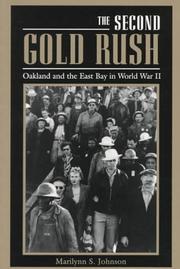| Listing 1 - 10 of 13 | << page >> |
Sort by
|

ISBN: 0585192138 9780585192130 0809311801 9780809311804 Year: 1985 Publisher: Carbondale [Ill.] Southern Illinois University Press
Abstract | Keywords | Export | Availability | Bookmark
 Loading...
Loading...Choose an application
- Reference Manager
- EndNote
- RefWorks (Direct export to RefWorks)
American literature --- City and town life in literature. --- English literature --- Agrarians (Group of writers) --- History and criticism. --- San Francisco Bay Area (Calif.) --- Bay Area, San Francisco (Calif.) --- San Francisco Bay Region (Calif.) --- San Francisco Region (Calif.) --- Intellectual life.
Book
ISBN: 1280594969 9786613624796 0199750556 9780199750559 9781280594960 9780199896158 0199896151 9780199752799 0199752796 9780199734085 0199734089 Year: 2010 Publisher: Oxford New York
Abstract | Keywords | Export | Availability | Bookmark
 Loading...
Loading...Choose an application
- Reference Manager
- EndNote
- RefWorks (Direct export to RefWorks)
From 1910 to 1940, the Angel Island immigration station in San Francisco served as the processing and detention center for over one million people from around the world. The majority of newcomers came from China and Japan, but there were also immigrants from India, the Philippines, Korea, Russia, Mexico, and over seventy other countries. The full history of these immigrants and their experiences on Angel Island is told for the first time in this landmark book, published to commemorate the immigration station's 100th anniversary. Based on extensive new research and oral histories, Angel Island:
Angel Island Immigration Station (Calif.) --- History. --- San Francisco Bay Area (Calif.) --- Bay Area, San Francisco (Calif.) --- San Francisco Bay Region (Calif.) --- San Francisco Region (Calif.) --- Emigration and immigration. --- History --- San Francisco Bay Area, Calif. --- Emigration and immigration

ISBN: 1280596031 9786613625861 0820343692 9780820343693 9781280596032 0820325457 9780820325453 Year: 2003 Publisher: Athens University of Georgia Press
Abstract | Keywords | Export | Availability | Bookmark
 Loading...
Loading...Choose an application
- Reference Manager
- EndNote
- RefWorks (Direct export to RefWorks)
All of Brady's stories are gritty and unflinching in their gaze, yet lyrical and rich in the imagery of stasis and change. There is much to learn in these tales of flawed but good people working hard to hold their lives together.
Love stories, American. --- American romance fiction --- Love stories, American --- American fiction --- San Francisco Bay Area (Calif.) --- Bay Area, San Francisco (Calif.) --- San Francisco Bay Region (Calif.) --- San Francisco Region (Calif.) --- Romance fiction, American. --- Romance-language fiction, American.
Book
ISBN: 9780804796026 0804796025 0804789401 1503600661 9780804789400 Year: 2015 Publisher: Stanford, Calif. Stanford Business Books
Abstract | Keywords | Export | Availability | Bookmark
 Loading...
Loading...Choose an application
- Reference Manager
- EndNote
- RefWorks (Direct export to RefWorks)
Today, the Bay Area is home to the most successful knowledge economy in America, while Los Angeles has fallen progressively farther behind its neighbour to the north and a number of other American metropolises. Yet, in 1970, experts would have predicted that L.A. would outpace San Francisco in population, income, economic power, and influence. The usual factors used to explain urban growth - luck, immigration, local economic policies, and the pool of skilled labour - do not account for the contrast between the two cities and their fates. So what does? This book challenges many of the conventional notions about economic development and sheds new light on its workings.
E-books --- Economic development --- San Francisco Bay Area (Calif.) --- Los Angeles Metropolitan Area (Calif.) --- Economic conditions. --- Development, Economic --- Economic growth --- Growth, Economic --- Economic policy --- Economics --- Statics and dynamics (Social sciences) --- Development economics --- Resource curse --- Bay Area, San Francisco (Calif.) --- San Francisco Bay Region (Calif.) --- San Francisco Region (Calif.) --- Economic geography --- Los Angeles [California] --- San Francisco [California]
Book
ISBN: 1282920200 9786612920202 0822383659 Year: 2002 Publisher: Durham : Duke University Press,
Abstract | Keywords | Export | Availability | Bookmark
 Loading...
Loading...Choose an application
- Reference Manager
- EndNote
- RefWorks (Direct export to RefWorks)
Through ethnographic research and in-depth interviews of students in two demographically distinct U.S. high schools-- one suburban and predominantly white; the other urban, multiracial, and minority white-- Perry shares students' candor about race and self-identification. By examining the meanings students attached (or didn't attach) to their social lives and everyday cultural practices, including their taste in music and clothes, she shows that the ways white students defined white identity were not only markedly different between the two schools but were considerably diverse and ambiguous within them as well. Challenging reductionist notions of whiteness and white racism, this study suggests how we might go "beyond whiteness" to new directions in antiracist activism and school reform. Shades of White is emblematic of an emerging second wave of whiteness studies that focuses on the racial identity of whites. It will appeal to scholars and students of anthropology, sociology, and cultural studies, as well as to those involved with high school education and antiracist activities.
Children, White --- Whites --- High school students, White --- Race awareness in children --- Child psychology --- White high school students --- White people --- White persons --- Ethnology --- Caucasian race --- White children --- Social conditions --- Race identity --- San Francisco Bay Area (Calif.) --- Bay Area, San Francisco (Calif.) --- San Francisco Bay Region (Calif.) --- San Francisco Region (Calif.) --- Race relations.

ISBN: 0814733255 0814731961 081473197X Year: 2009 Publisher: New York, NY : New York University Press,
Abstract | Keywords | Export | Availability | Bookmark
 Loading...
Loading...Choose an application
- Reference Manager
- EndNote
- RefWorks (Direct export to RefWorks)
Filipinos are now the second largest Asian American immigrant group in the United States, with a population larger than Japanese Americans and Korean Americans combined. Surprisingly, there is little published on Filipino Americans and their religion, or the ways in which their religious traditions may influence the broader culture in which they are becoming established.Filipino American Faith in Action draws on interviews, survey data, and participant observation to shed light on this large immigrant community. It explores Filipino American religious institutions as essential locations for empowerment and civic engagement, illuminating how Filipino spiritual experiences can offer a lens for viewing this migrant community’s social, political, economic, and cultural integration into American life. Gonzalez examines Filipino American church involvement and religious practices in the San Francisco Bay Area and in the Phillipines, showing how Filipino Americans maintain community and ethnic and religious networks, contra assimilation theory, and how they go about sharing their traditions with the larger society.
Filipino Americans --- Philippine Americans --- Ethnology --- Filipinos --- Religion. --- Philippines --- United States --- San Francisco Bay Area (Calif.) --- Bay Area, San Francisco (Calif.) --- San Francisco Bay Region (Calif.) --- San Francisco Region (Calif.) --- Emigration and immigration. --- Religious life and customs. --- Immigration --- Draws. --- community. --- data. --- immigrant. --- interviews. --- large. --- light. --- observation. --- participant. --- shed. --- survey. --- this.
Book
ISBN: 9780773444003 0773444009 9780773438286 0773438289 Year: 2009 Publisher: Lewiston : The Edwin Mellen Press,
Abstract | Keywords | Export | Availability | Bookmark
 Loading...
Loading...Choose an application
- Reference Manager
- EndNote
- RefWorks (Direct export to RefWorks)
This work examines how writers in the San Francisco Bay Area worked to develop a multiculturalist American literature. This study counteracts popular narratives of multiculturalism's boom in the late 1980s and early 1990s by showing that a large group of culturally eclectic writers in the Bay Area were re-envisioning American identity through a multiculturalist looking glass many years earlier.
American literature --- Multiculturalism in literature --- Beat literature --- English --- Languages & Literatures --- American Literature --- Literature --- English literature --- Agrarians (Group of writers) --- History and criticism. --- Reed, Ishmael, --- Kingston, Maxine Hong --- Chin, Frank, --- Criticism and interpretation. --- San Francisco Bay Area (Calif.) --- Intellectual life. --- In literature. --- Coleman, Emmett, --- 赵健秀, --- Hong, Maxine Jinsidun --- Hong, Maxine Ting Ting --- Jinsidun, Makexin Hong --- Tang, Tingting, --- 汤亭亭 --- 洪婷婷 --- Bay Area, San Francisco (Calif.) --- San Francisco Bay Region (Calif.) --- San Francisco Region (Calif.) --- 赵健秀
Book
ISBN: 9780521759700 9780511810985 9780521766005 9780511658532 0511658532 9780511656675 051165667X 0511810989 0521766001 0521759706 0511700563 9780511700569 1283329395 9781283329392 9786613329394 6613329398 0511657986 9780511657986 0511655827 9780511655821 0511657226 9780511657221 110720884X Year: 2010 Publisher: Cambridge New York
Abstract | Keywords | Export | Availability | Bookmark
 Loading...
Loading...Choose an application
- Reference Manager
- EndNote
- RefWorks (Direct export to RefWorks)
This book examines information reported within the media regarding the interaction between the Black Panther Party and government agents in the Bay Area of California (1967-1973). Christian Davenport argues that the geographic locale and political orientation of the newspaper influences how specific details are reported, including who starts and ends the conflict, who the Black Panthers target (government or non-government actors), and which part of the government responds (the police or court). Specifically, proximate and government-oriented sources provide one assessment of events, whereas proximate and dissident-oriented sources have another; both converge on specific aspects of the conflict. The methodological implications of the study are clear; Davenport's findings prove that in order to understand contentious events, it is crucial to understand who collects or distributes the information in order to comprehend who reportedly does what to whom as well as why.
Black Panther Party --- Press coverage --- California --- San Francisco Bay Area, Calif. --- History --- Journalism --- Objectivity --- United States --- Political aspects --- African Americans --- Politics and government --- 20th century --- Civil rights movements --- Race relations --- Civil liberation movements --- Liberation movements (Civil rights) --- Protest movements (Civil rights) --- Human rights movements --- Afro-Americans --- Black Americans --- Colored people (United States) --- Negroes --- Africans --- Ethnology --- Blacks --- Black Panthers --- BPP (Black Panther Party) --- B.P.P. (Black Panther Party) --- Black Panther Party for Self-Defense --- History. --- San Francisco Bay Area (Calif.) --- Bay Area, San Francisco (Calif.) --- San Francisco Bay Region (Calif.) --- San Francisco Region (Calif.) --- Race relations. --- Black people --- Social Sciences --- Political Science
Book
ISBN: 1282359991 9786612359996 0520945026 9780520945029 9780520259133 0520259130 9781282359994 Year: 2009 Publisher: Berkeley University of California Press
Abstract | Keywords | Export | Availability | Bookmark
 Loading...
Loading...Choose an application
- Reference Manager
- EndNote
- RefWorks (Direct export to RefWorks)
Levi Strauss, A.L. Gump, Yehudi Menuhin, Gertrude Stein, Adolph Sutro, Congresswoman Florence Prag Kahn--Jewish people have been so enmeshed in life in and around San Francisco that their story is a chronicle of the metropolis itself. Since the Gold Rush, Bay Area Jews have countered stereotypes, working as farmers and miners, boxers and mountaineers. They were Gold Rush pioneers, Gilded Age tycoons, and Progressive Era reformers. Told through an astonishing range of characters and events, Cosmopolitans illuminates many aspects of Jewish life in the area: the high profile of Jewish women, extraordinary achievements in the business world, the cultural creativity of the second generation, the bitter debate about the proper response to the Holocaust and Zionism, and much more. Focusing in rich detail on the first hundred years after the Gold Rush, the book also takes the story up to the present day, demonstrating how unusually strong affinities for the arts and for the struggle for social justice have characterized this community even as it has changed over time. Cosmopolitans, set in the uncommonly diverse Bay Area, is a truly unique chapter of the Jewish experience in America.
Jews --- Hebrews --- Israelites --- Jewish people --- Jewry --- Judaic people --- Judaists --- Ethnology --- Religious adherents --- Semites --- Judaism --- History. --- San Francisco Bay Area (Calif.) --- Bay Area, San Francisco (Calif.) --- San Francisco Bay Region (Calif.) --- San Francisco Region (Calif.) --- Ethnic relations. --- 19th century american culture. --- 20th century american culture. --- adolph sutro. --- al gump. --- bay area jews. --- business world. --- california. --- class conflict. --- cultural creativity. --- florence prag kahn. --- gertrude stein. --- gilded age. --- gold rush. --- great depression. --- holocaust. --- jewish american experience. --- jewish americans. --- jewish people. --- jewish reformers. --- jewish women. --- judaism. --- levi strauss. --- progressive era. --- san francisco. --- social justice. --- united states of america. --- yehundi menuhin. --- zionism.

ISBN: 0520918436 0585078874 9780520918436 9780585078878 0520081919 0520207017 Year: 1993 Publisher: Berkeley University of California Press
Abstract | Keywords | Export | Availability | Bookmark
 Loading...
Loading...Choose an application
- Reference Manager
- EndNote
- RefWorks (Direct export to RefWorks)
More than any event in the twentieth century, World War II marked the coming of age of America's West Coast cities. Almost overnight, new war industries prompted the mass urban migration and development that would trigger lasting social, cultural, and political changes. For the San Francisco Bay Area, argues Marilynn Johnson, the changes brought by World War II were as dramatic as those brought by the gold rush a century earlier.Focusing on Oakland, Richmond, and other East Bay shipyard boomtowns, Johnson chronicles the defense buildup, labor migration from the South and Midwest, housing issues, and social and racial conflicts that pitted newcomers against longtime Bay Area residents. She follows this story into the postwar era, when struggles over employment, housing, and civil rights shaped the urban political landscape for the 1950s and beyond. She also traces the cultural legacy of war migration and shows how Southern religion and music became an integral part of Bay Area culture.Johnson's sources are wide-ranging and include shipyard records, labor histories, police reports, and interviews. Her findings place the war's human drama at center stage and effectively recreate the texture of daily life in workplace, home, and community. Enriched by the photographs of Dorothea Lange and others, The Second Gold Rush makes an important contribution to twentieth-century urban studies as well as to California history.
Rural-urban migration --- World War, 1939-1945 --- European War, 1939-1945 --- Second World War, 1939-1945 --- World War 2, 1939-1945 --- World War II, 1939-1945 --- World War Two, 1939-1945 --- WW II (World War, 1939-1945) --- WWII (World War, 1939-1945) --- History, Modern --- Cities and towns, Movement to --- Country-city migration --- Migration, Rural-urban --- Rural exodus --- Migration, Internal --- Rural-urban relations --- Urbanization --- History --- Oakland (Calif.) --- San Francisco Bay Area (Calif.) --- Bay Area, San Francisco (Calif.) --- San Francisco Bay Region (Calif.) --- San Francisco Region (Calif.) --- City of Oakland (Calif.) --- History.
| Listing 1 - 10 of 13 | << page >> |
Sort by
|

 Search
Search Feedback
Feedback About UniCat
About UniCat  Help
Help News
News